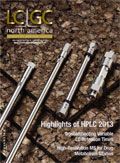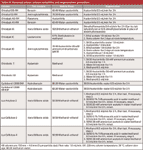Market Profile: Ion Chromatography
Ion chromatography (IC) is a similar technique to HPLC except that the detector of choice is usually a conductivity detector. IC is well suited for the analysis of a variety of inorganic and organic anions and cations.
Ion chromatography (IC) is a similar technique to HPLC except that the detector of choice is usually a conductivity detector. IC is well suited for the analysis of a variety of inorganic and organic anions and cations. There is an additional dimension to an experiment using the technique as a result of the need to deal with changes in the ionic strength of the solution as the analyte materials are exchanged.
The US and Europe account for the majority of the total IC demand. In fact, both regions made up about 70% of the 2012 market for the technology. Europe's growth, in particular, is fueled by the RoHS initiative, which regulates the levels of lead, cadmium, mercury, hexavalent chromium, polybrominated biphenyl (PBB), and polybrominated diphenyl ether (PBDE) flame retardants in new electrical and electronic equipment. Asia also continues to be a hotbed for growth, especially as the region adopts many of the environmental regulations and methods established in the US and Europe.

2012 ion chromatography regional demand.
The introduction of application specific systems is another growth factor for the IC market. Many users are migrating to systems with eluent generation and regeneration technology. These systems make IC methods simple and reliable, as well as increase overall productivity. The use of ion chromatography with mass spectrometry is also becoming more common.
The top four application areas for ion chromatography are general and environmental testing, chemicals, pharmaceuticals, and agriculture, food, and beverage. The general and environmental testing sector, in particular, is the fastest growing, with the bulk of its growth stemming from Asia and Latin America.
The foregoing data were extracted and adapted from SDi's newly published Electrochemistry & Related Ion Analysis Techniques report. For more information, visit www.stragetic-directions.com

Regulatory Deadlines and Supply Chain Challenges Take Center Stage in Nitrosamine Discussion
April 10th 2025During an LCGC International peer exchange, Aloka Srinivasan, Mayank Bhanti, and Amber Burch discussed the regulatory deadlines and supply chain challenges that come with nitrosamine analysis.











